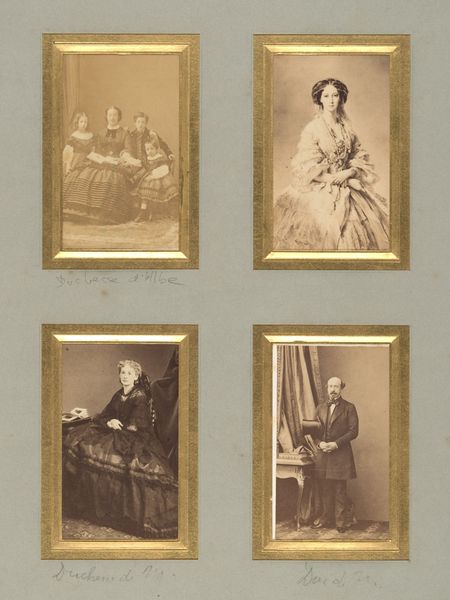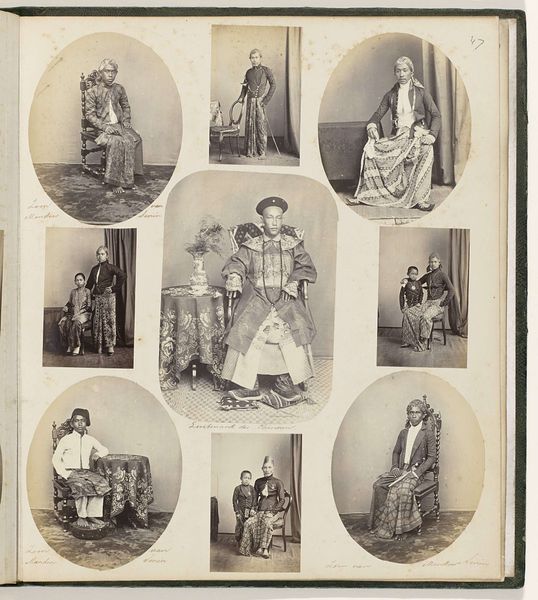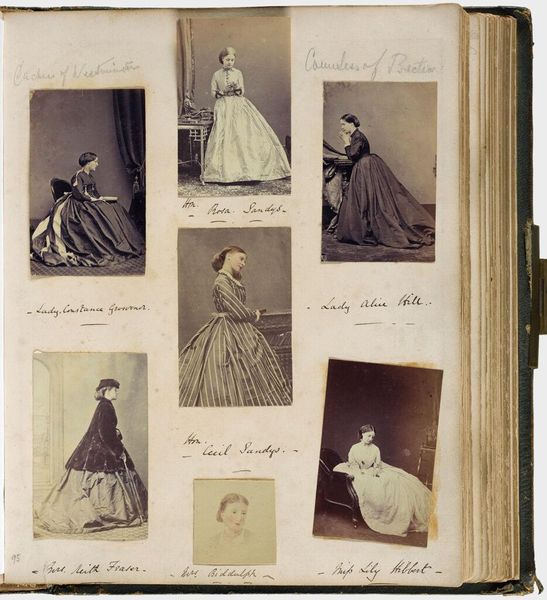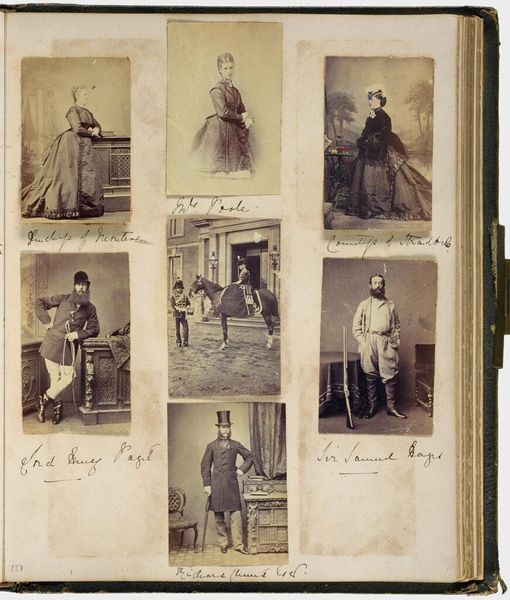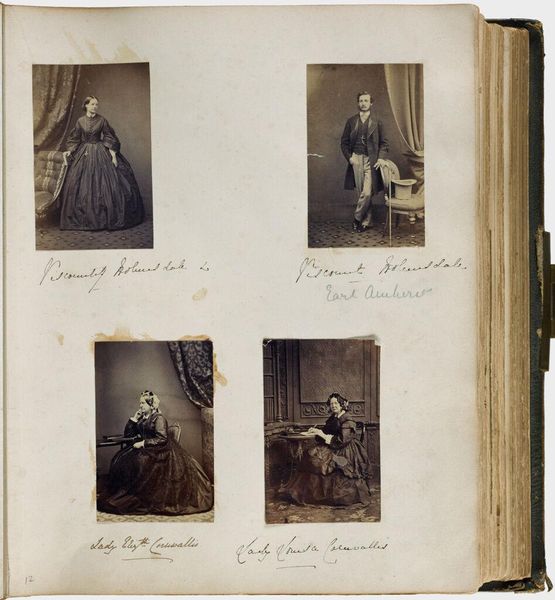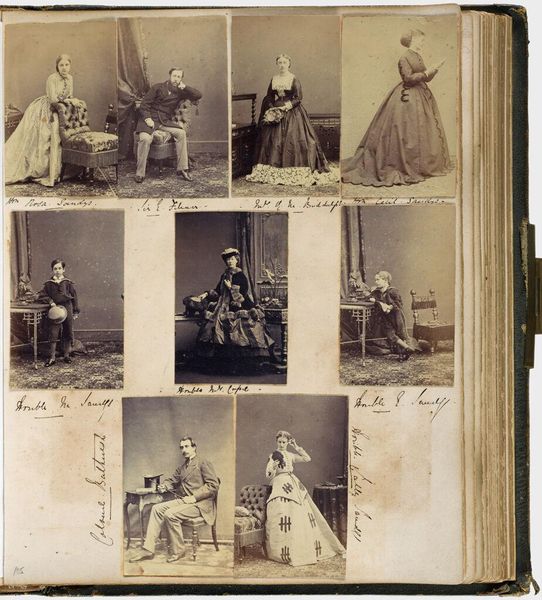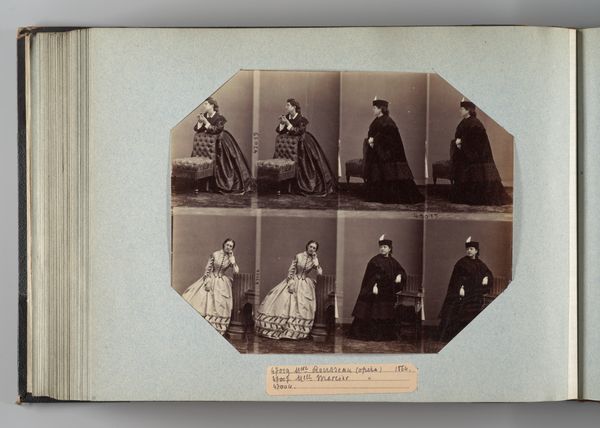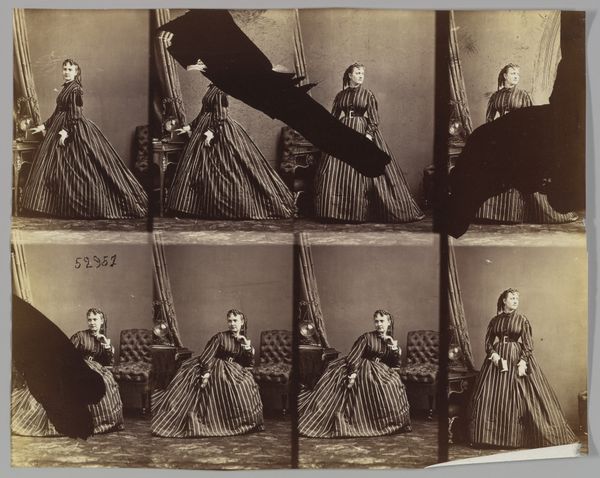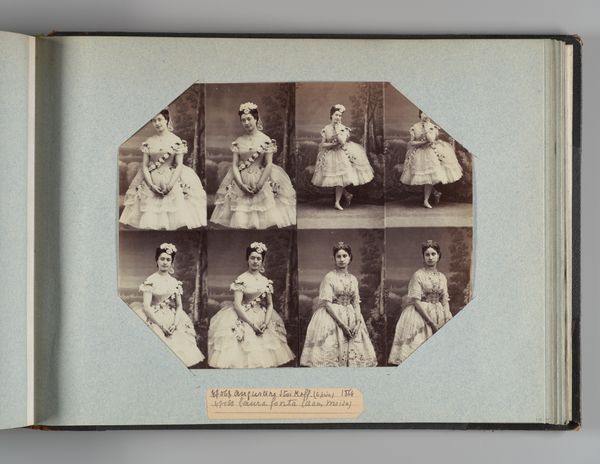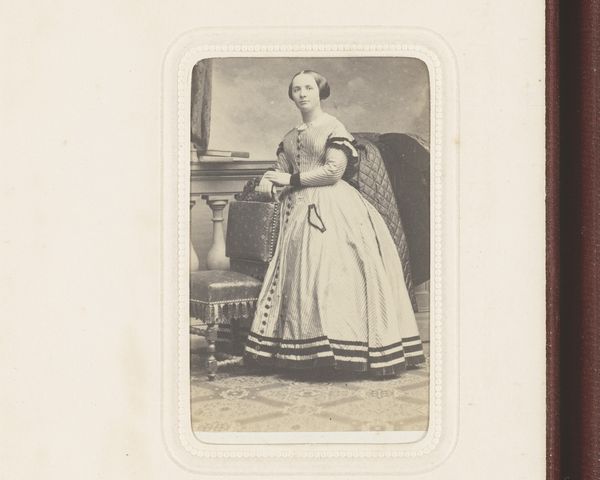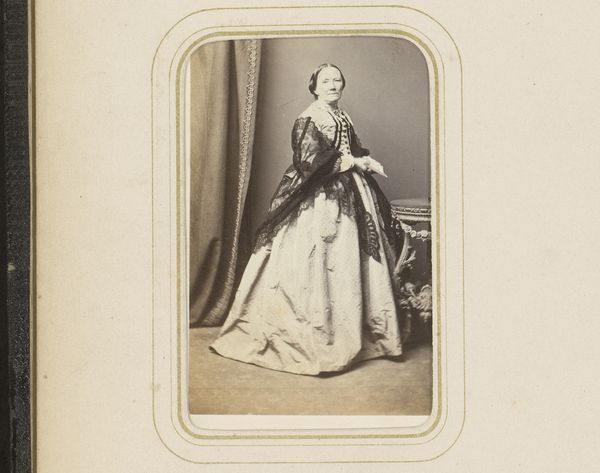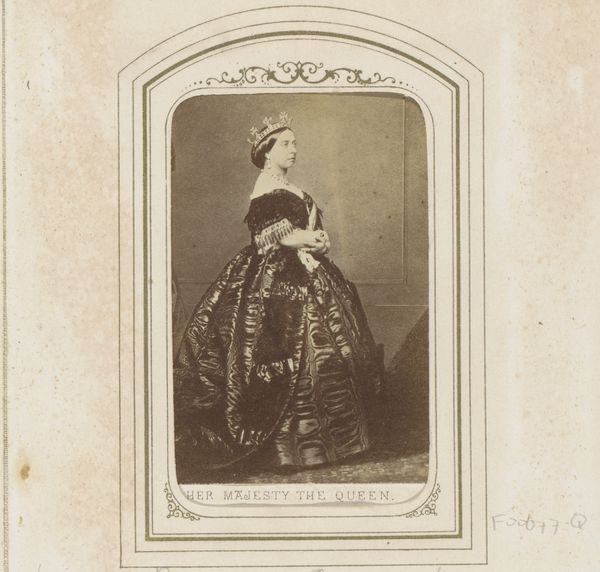
Miss Douglas; Mlle Isaline Motte; Miss Fanny Evans; Miss Catinka Smith; Mrs Leitch née Lloyd; Miss Martin; Capt. & Mrs Hibbert; Miss Cecilia Regnell 1853 - 1856
0:00
0:00
#
portrait
#
aged paper
#
toned paper
#
light pencil work
#
muted colour palette
#
photo restoration
#
historical fashion
#
old-timey
#
19th century
#
men
#
watercolour illustration
#
watercolor
Dimensions: Image: 8.9 × 5.5 cm (3 1/2 × 2 3/16 in.) (a) Image: 8 × 4.8 cm (3 1/8 × 1 7/8 in.) (b), oval Image: 8.7 × 5.5 cm (3 7/16 × 2 3/16 in.) (c) Image: 8.4 × 5.3 cm (3 5/16 × 2 1/16 in.) (d), diamond Image: 8.4 × 5.3 cm (3 5/16 × 2 1/16 in.) (e), diamond Image: 8.6 × 5.3 cm (3 3/8 × 2 1/16 in.) (f) Image: 8.1 × 5.5 cm (3 3/16 × 2 3/16 in.) (g), oval Image: 9.2 × 5.7 cm (3 5/8 × 2 1/4 in.) (h)
Copyright: Public Domain
Curator: Look at this remarkable photographic tableau. It’s titled "Miss Douglas; Mlle Isaline Motte; Miss Fanny Evans; Miss Catinka Smith; Mrs Leitch n\u00e9e Lloyd; Miss Martin; Capt. & Mrs Hibbert; Miss Cecilia Regnell," and it was captured between 1853 and 1856 by John Dillwyn Llewelyn. Editor: It feels so… formal. These women, and that lone couple, frozen in time. There’s an echo of Victorian ideals of womanhood and respectability in these carefully posed figures and the muted, almost mournful color palette. Curator: Exactly. Llewelyn was part of a circle pushing the boundaries of early photography. It's significant that he documented these figures in their specific social contexts. He presents a range of female identities within the restrictive social norms of the Victorian era. Are they empowered, constrained, or something in between? Editor: The symmetry is intriguing. The photographer arranged these portraits with care and balance. The ovals, diamonds, and rectangles almost create a symbolic hierarchy. The light pencil work also seems to intentionally create an aura of ethereal beauty around them, enhancing their features and attire. Curator: Note also the power dynamics implicitly explored in the singular portrait of the married couple, standing opposite all of the individual female figures on this tableau. We see them together, perhaps an attempt at claiming legitimacy or shared social position in this society and time. Are they freer within the perceived safety of their matrimony? Editor: Or are they trapped in it, considering how most of the ladies have come to represent a certain period? It would be great to explore what the women wore at the time and discuss whether their style impacted them socially, what traditions and stories do these outfits represent. Curator: It makes you consider the relationship between self-presentation and societal expectations for women of that time, particularly the way they used fashion to represent themselves. This piece serves as a window into how identity and gender were constructed and performed in the mid-19th century. Editor: These faces and costumes, arranged with such meticulous care. Each portrait whispers a silent story and now I see them echoing through time, the women themselves now becoming symbols of both their age and timeless aspirations.
Comments
No comments
Be the first to comment and join the conversation on the ultimate creative platform.
